#include "include/jlte.h"
Detailed Description
Long Term Evolution (LTE)
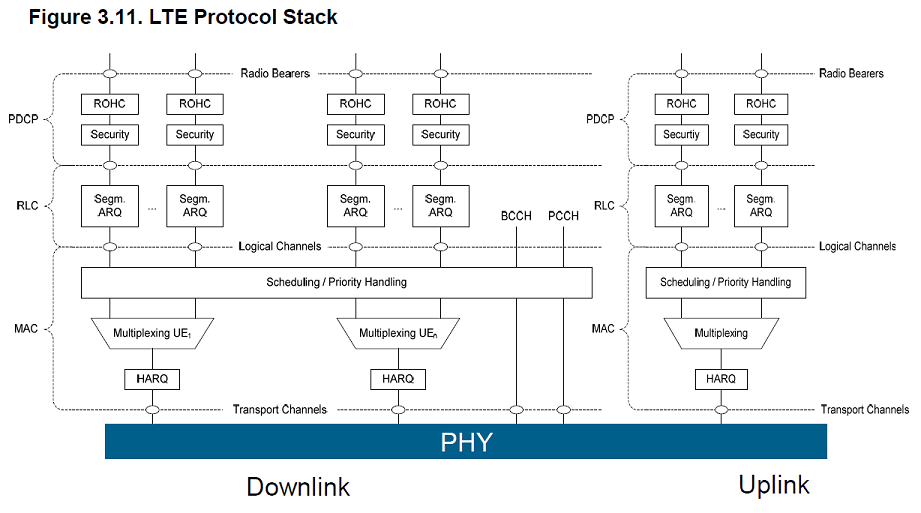
See PDCP_LTE_v14_1_0 specification on www.3gpp.org
If not otherwise mentioned in the definition of each field then the bits in the parameters shall be interpreted as follows: the left most bit string is the first and most significant and the right most bit is the last and least significant bit
Unless otherwise mentioned, integers are encoded in standard binary encoding for unsigned integers. In all cases the bits appear ordered from MSB to LSB when read in the PDU
PDCP SN
Length: 5, 7, 12, 15, 16, or 18 bits as indicated in the following table except for NB-IoT which uses 7 bit PDCP SN for DRB.
| Length | Description |
|---|---|
| 5 | SRBs |
| 7 | DRBs, if configured by upper layers (pdcp-SN-Size) |
| 12 | DRBs, if configured by upper layers (pdcp-SN-Size) |
| 15 | DRBs, if configured by upper layers (pdcp-SN-Size) |
| 16 | SLRBs |
| 18 | DRBs, if configured by upper layers (pdcp-SN-Size) |
Data
Length: Variable
The Data field may include either one of the following:
- Uncompressed PDCP SDU (user plane data, or control plane data); or
- Compressed PDCP SDU (user plane data only)
MAC-I
Length: 32 bits
The MAC-I field carries a message authentication code calculated as specified in subclause 5.7 For control plane data that are not integrity protected, the MAC-I field is still present and should be padded with padding bits set to 0
COUNT
Length: 32 bits
For ciphering and integrity a COUNT value is maintained. The COUNT value is composed of a HFN and the PDCP SN. The length of the PDCP SN is configured by upper layers
| HFN | PDCP SN |
The size of the HFN part in bits is equal to 32 minus the length of the PDCP SN.
NOTE: When performing comparison of values related to COUNT, the UE takes into account that COUNT is a 32-bit value, which may wrap around (e.g., COUNT value of 232 - 1 is less than COUNT value of 0).
R
Length: 1 bit
Reserved. In this version of the specification reserved bits shall be set to 0. Reserved bits shall be ignored by the receiver
D/C
Length: 1 bit
| Bit | Description |
|---|---|
| 0 | Control PDU |
| 1 | Data PDU |
PDU type
Length: 3 bits
| Bit | Description |
|---|---|
| 000 | PDCP status report |
| 001 | Interspersed ROHC feedback packet |
| 010 | LWA status report |
| 011-111 | Reserved |
FMS
Length: 12 bits when a 12 bit SN length is used, 15 bits when a 15 bit SN length is used, and 18 bits when an 18 bit SN length is used
PDCP SN of the first missing PDCP SDU
Bitmap
Length: Variable
The length of the bitmap field can be 0
The MSB of the first octet of the type "Bitmap" indicates whether or not the PDCP SDU with the SN (FMS + 1) modulo (Maximum_PDCP_SN + 1) has been received and, optionally decompressed correctly. The LSB of the first octet of the type "Bitmap" indicates whether or not the PDCP SDU with the SN (FMS + 8) modulo (Maximum_PDCP_SN + 1) has been received and, optionally decompressed correctly
| Bit | Description |
|---|---|
| 0 | PDCP SDU with PDCP SN = (FMS + bit position) modulo (Maximum_PDCP_SN+1) is missing in the receiver. The bit position of Nth bit in the Bitmap is N, i.e., the bit position of the first bit in the Bitmap is 1 |
| 1 | PDCP SDU with PDCP SN = (FMS + bit position) modulo (Maximum_PDCP_SN+1) does not need to be retransmitted. The bit position of Nth bit in the Bitmap is N, i.e., the bit position of the first bit in the Bitmap is 1 |
The UE fills the bitmap indicating which SDUs are missing (unset bit - ’0’), i.e. whether an SDU has not been received or optionally has been received but has not been decompressed correctly, and which SDUs do not need retransmission (set bit - ’1’), i.e. whether an SDU has been received correctly and may or may not have been decompressed correctly
Interspersed ROHC feedback packet
Length: Variable
Contains one ROHC packet with only feedback, i.e. a ROHC packet that is not associated with a PDCP SDU as defined in subclause 5.5.4.
PGK Index
Length: 5 bits
5 LSBs of PGK Identity as specified in [13]
PTK Identity
Length: 16 bits
PTK Identity as specified in [13].
SDU Type
Length: 3 bits
PDCP SDU type, i.e. Layer-3 Protocol Data Unit type as specified in [14]. PDCP entity may handle the SDU differently per SDU Type, e.g. header compression is applicable to IP SDU but not ARP SDU and Non-IP SDU
| Bit | Description |
|---|---|
| 000 | IP |
| 001 | ARP |
| 010 | PC5 Signaling |
| 011 | Non-IP |
| 100-111 | Reserved |
KD-sess ID
Length: 16 bits
KD-sess Identity as specified in [13].
NMP
Length: 12 bits when a 12 bit SN length is used, 15 bits when a 15 bit SN length is used, and 18 bits when an 18 bit SN length is used. Number of missing PDCP SDU(s) with associated COUNT value below the associated COUNT value corresponding to HRW, starting from and including the associated COUNT value corresponding to FMS
HRW
Length: 12 bits when a 12 bit SN length is used, 15 bits when a 15 bit SN length is used and 18 bits when an 18 bit SN length is used
PDCP SN of the PDCP SDU received on WLAN with highest associated PDCP COUNT value
P
Length: 1 bit
Polling indication. Set to 1 when eNB triggers a PDCP status report or LWA status report for LWA
Encryption
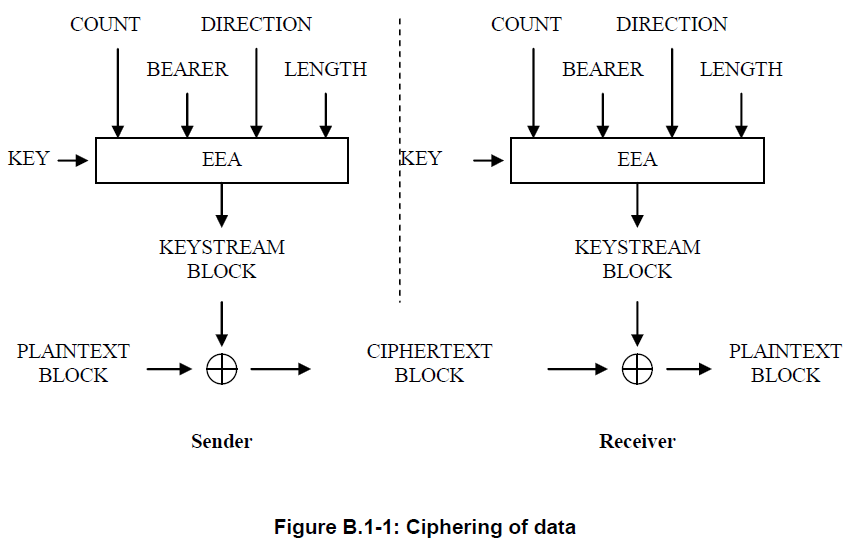
LTE uses the Snow3g and ZUC encryption algorithms for the user plan and AES-CTR mode for the control plane. The key is 128-bit for all three algorithms. As shown above, all algorithms are stream ciphers with inputs of key, 32-bit COUNT, 5-bit BEARER, DIRECTION (UPLINK or DOWNLINK), LENGTH in bits to generate the KEYSTREAM block of (length+31)/32 words. The keystream is XOR'd with the keystream to create the ciphertext block. Encryption is applied to the payload of the packet
Authentication

LTE uses the Snow3g and ZUC authentication algorithms (also known as F9 mode), for the user plane and AES-CMAC mode for the control plan. The key is 128-bit for all three algorithms. As shown above, using the key, 32-bit COUNT, 5-bit BEARER (or sometimes called FRESH), DIRECTION (UPLINK or DOWNLINK), to generate a 4-byte MAC. Authentication is applied over both the header and the payload (the encrypted payload if encryption is enabled) with the MAC appended to the end of the packet
LTE Control Plane Packet formats [4]
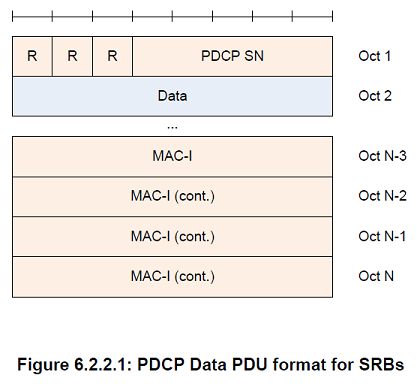
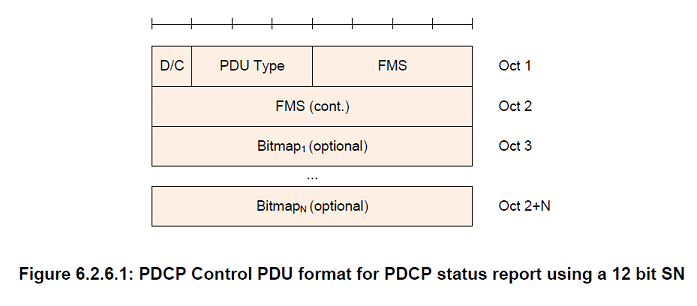
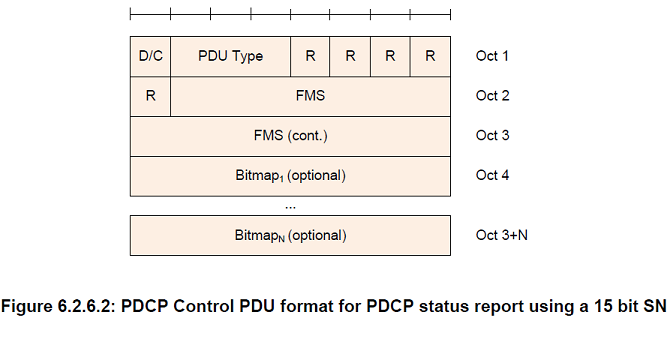
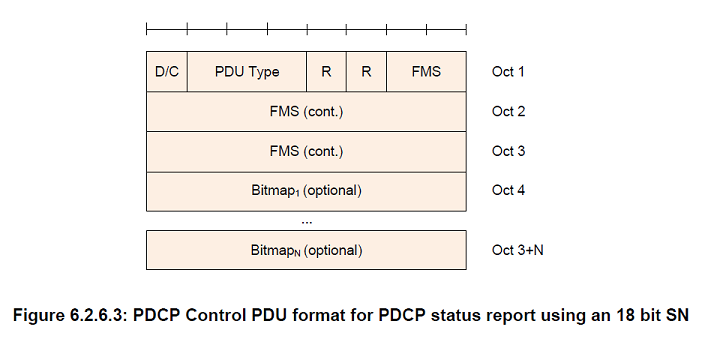
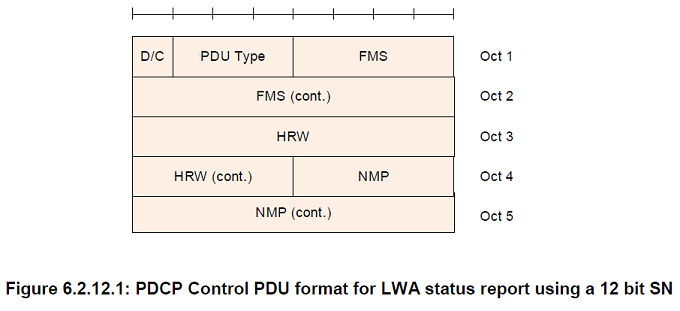

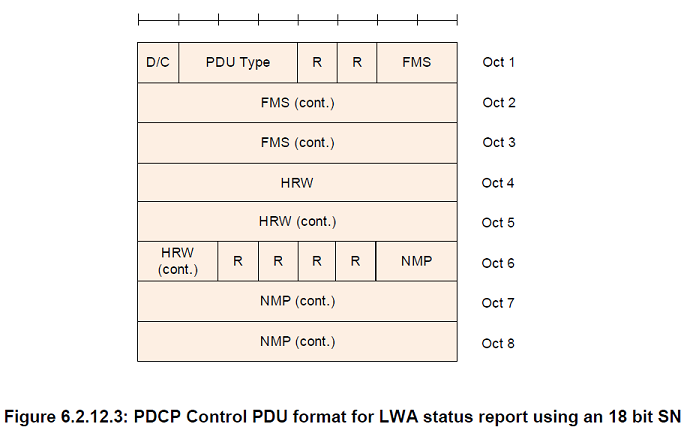

LTE User Plane Packet formats [5]



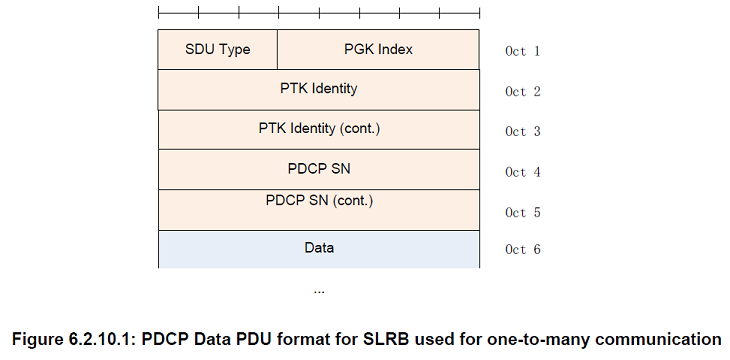
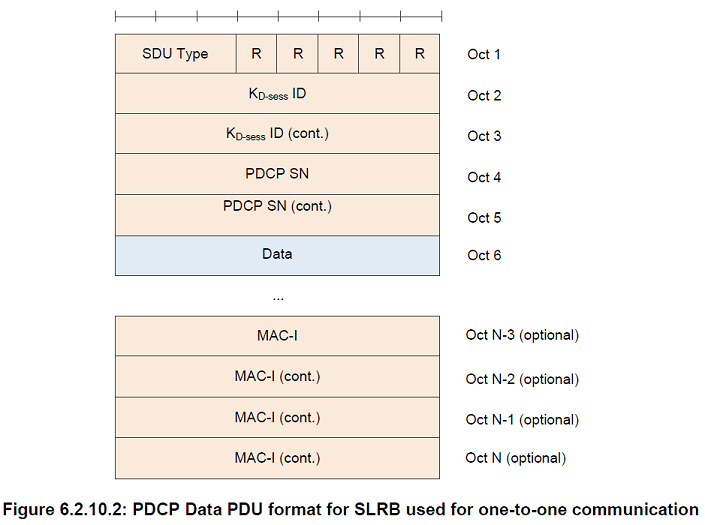

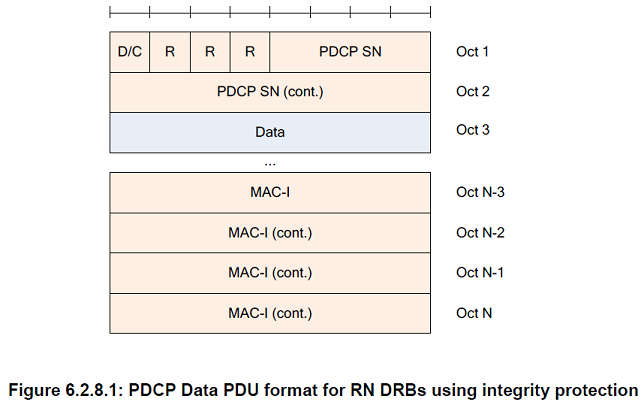
- www.nxp.com/Long Term Evolution Protocol Overview p12
- 3GPP TS 36.323 V14.1.0 (2016-12)
- 3GPP TS 36.323 V14.1.0 (2016-12)
- 3GPP TS 36.323 V14.1.0 (2016-12)
- 3GPP TS 36.323 V14.1.0 (2016-12)
For API Documentation:
- See also
- ProtocolPP::jprotocol
- ProtocolPP::jlte
- ProtocolPP::jltesa
- ProtocolPP::jsnow3g
- ProtocolPP::jsnowv
- ProtocolPP::jzuc
- ProtocolPP::jmodes
For Additonal Documentation:
The source code contained or described herein and all documents related to the source code (herein called "Material") are owned by John Peter Greninger and Sheila Rocha Greninger. Title to the Material remains with John Peter Greninger and Sheila Rocha Greninger. The Material contains trade secrets and proprietary and confidential information of John Peter Greninger and Sheila Rocha Greninger. The Material is protected by worldwide copyright and trade secret laws and treaty provisions. No part of the Material may be used, copied, reproduced, modified, published, uploaded, posted, transmitted, distributed, or disclosed in any way without prior express written consent of John Peter Greninger and Sheila Rocha Greninger (both are required)
No license under any patent, copyright, trade secret, or other intellectual property right is granted to or conferred upon you by disclosure or delivery of the Materials, either expressly, by implication, inducement, estoppel, or otherwise. Any license under such intellectual property rights must be express and approved by John Peter Greninger and Sheila Rocha Greninger in writing
Licensing information can be found at www.protocolpp.com/license with use of the binary forms permitted provided that the following conditions are met:
- Redistributions in binary form must reproduce the above copyright notice, this list of conditions and the following disclaimer in the documentation and/or other materials provided with the distribution
- Any and all modifications must be returned to John Peter Greninger at GitHub.com https://github.com/jpgreninger/protocolpp for evaluation. Inclusion of modifications in the source code shall be determined solely by John Peter Greninger. Failure to provide modifications shall render this license NULL and VOID and revoke any rights to use of Protocol++®
- Commercial use (incidental or not) requires a fee-based license obtainable at www.protocolpp.com/shop
- Academic or research use requires prior written and notarized permission from John Peter and Sheila Rocha Greninger
Use of the source code requires purchase of the source code. Source code can be purchased at www.protocolpp.com/shop
- US Copyrights at https://www.copyright.gov/
- TXu002059872 (Version 1.0.0)
- TXu002066632 (Version 1.2.7)
- TXu002082674 (Version 1.4.0)
- TXu002097880 (Version 2.0.0)
- TXu002169236 (Version 3.0.1)
- TXu002182417 (Version 4.0.0)
- TXu002219402 (Version 5.0.0)
- TXu002272076 (Version 5.2.1)
- TXu002383571 (Version 5.4.3)
The name of its contributor may not be used to endorse or promote products derived from this software without specific prior written permission and licensing
THIS SOFTWARE IS PROVIDED BY THE COPYRIGHT HOLDER AND CONTRIBUTOR "AS IS" AND ANY EXPRESS OR IMPLIED WARRANTIES, INCLUDING, BUT NOT LIMITED TO, THE IMPLIED WARRANTIES OF MERCHANTABILITY AND FITNESS FOR A PARTICULAR PURPOSE ARE DISCLAIMED. IN NO EVENT SHALL THE COPYRIGHT OWNER OR CONTRIBUTORS BE LIABLE FOR ANY DIRECT, INDIRECT, INCIDENTAL, SPECIAL, EXEMPLARY, OR CONSEQUENTIAL DAMAGES (INCLUDING, BUT NOT LIMITED TO, PROCUREMENT OF SUBSTITUTE GOODS OR SERVICES; LOSS OF USE, DATA, OR PROFITS; OR BUSINESS INTERRUPTION) HOWEVER CAUSED AND ON ANY THEORY OF LIABILITY, WHETHER IN CONTRACT, STRICT LIABILITY, OR TORT (INCLUDING NEGLIGENCE OR OTHERWISE) ARISING IN ANY WAY OUT OF THE USE OF THIS SOFTWARE, EVEN IF ADVISED OF THE POSSIBILITY OF SUCH DAMAGE
The documentation for this class was generated from the following file:
- include/jlte.h




